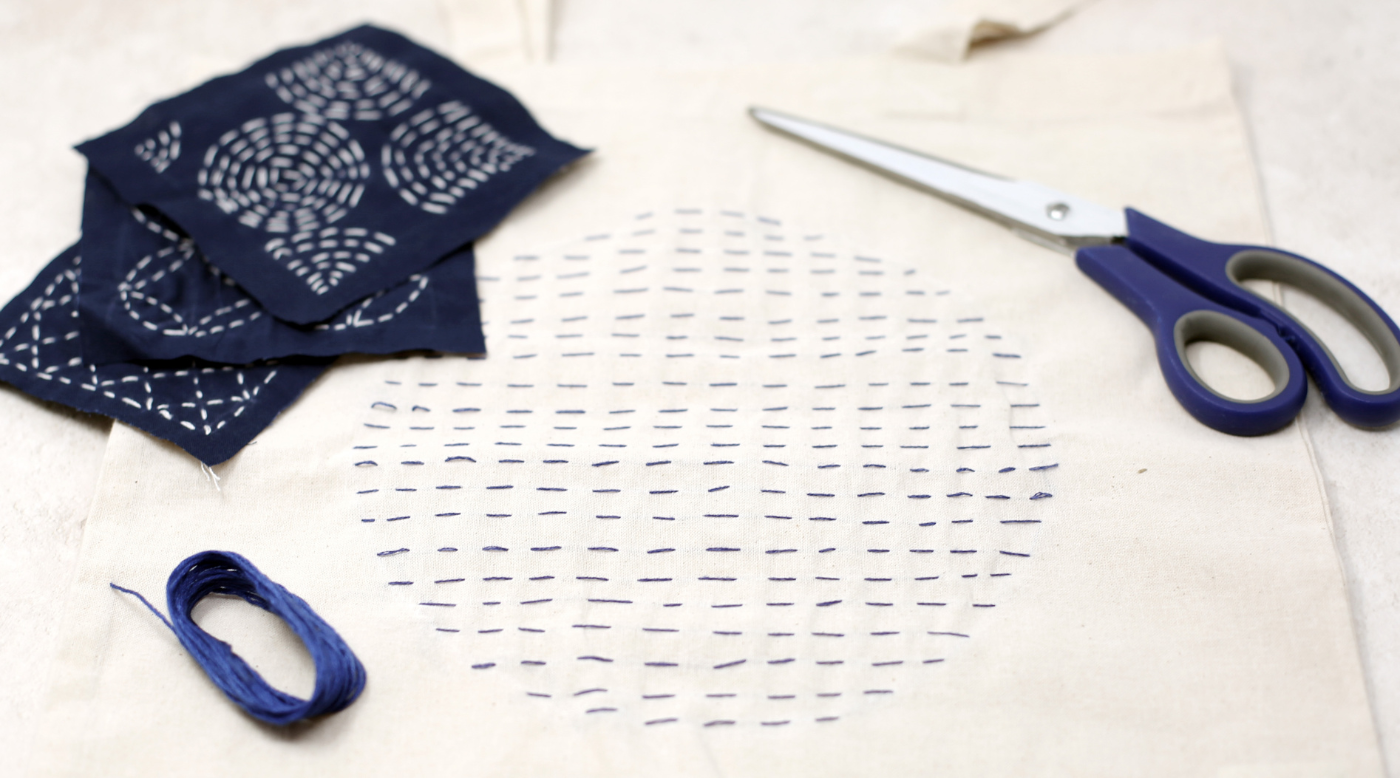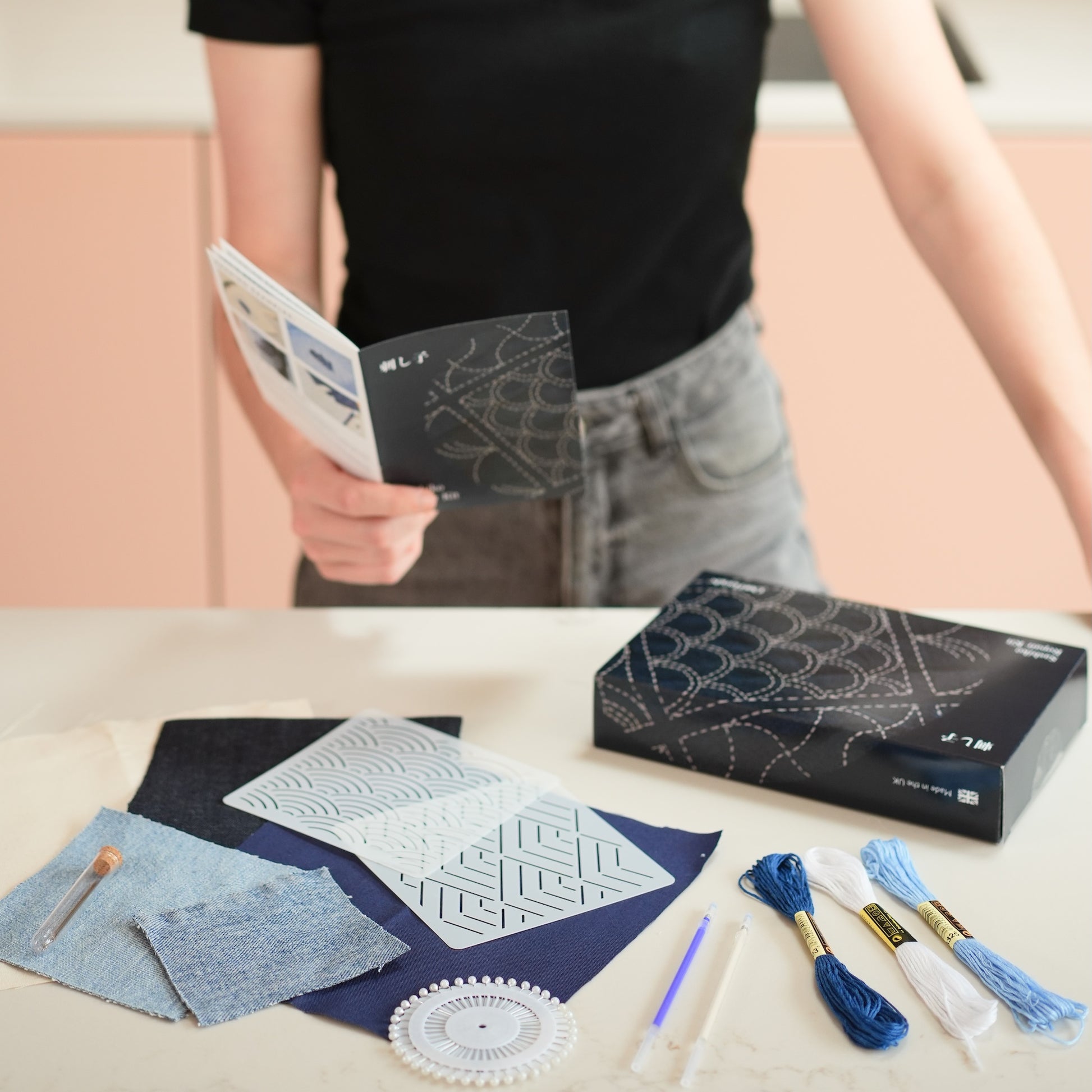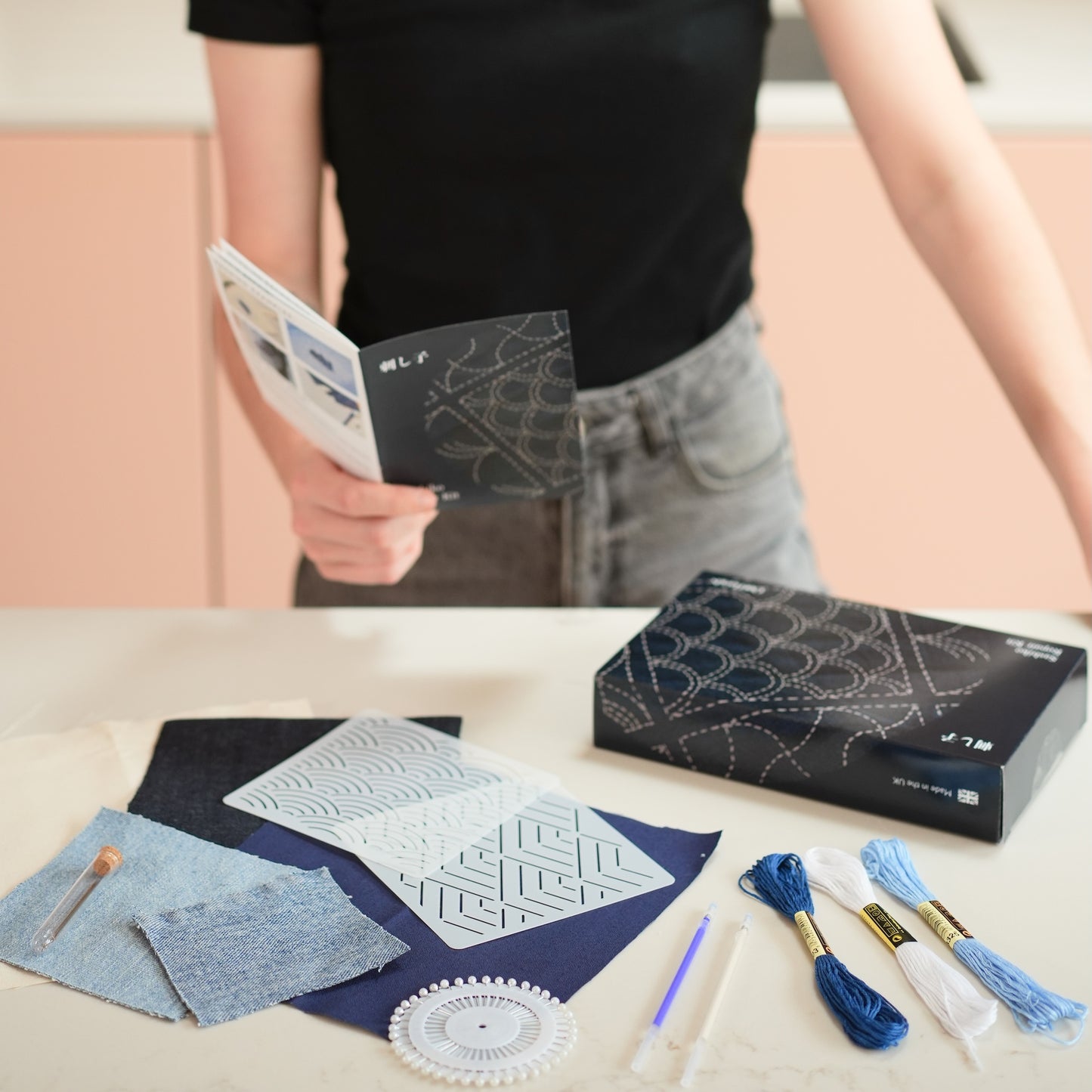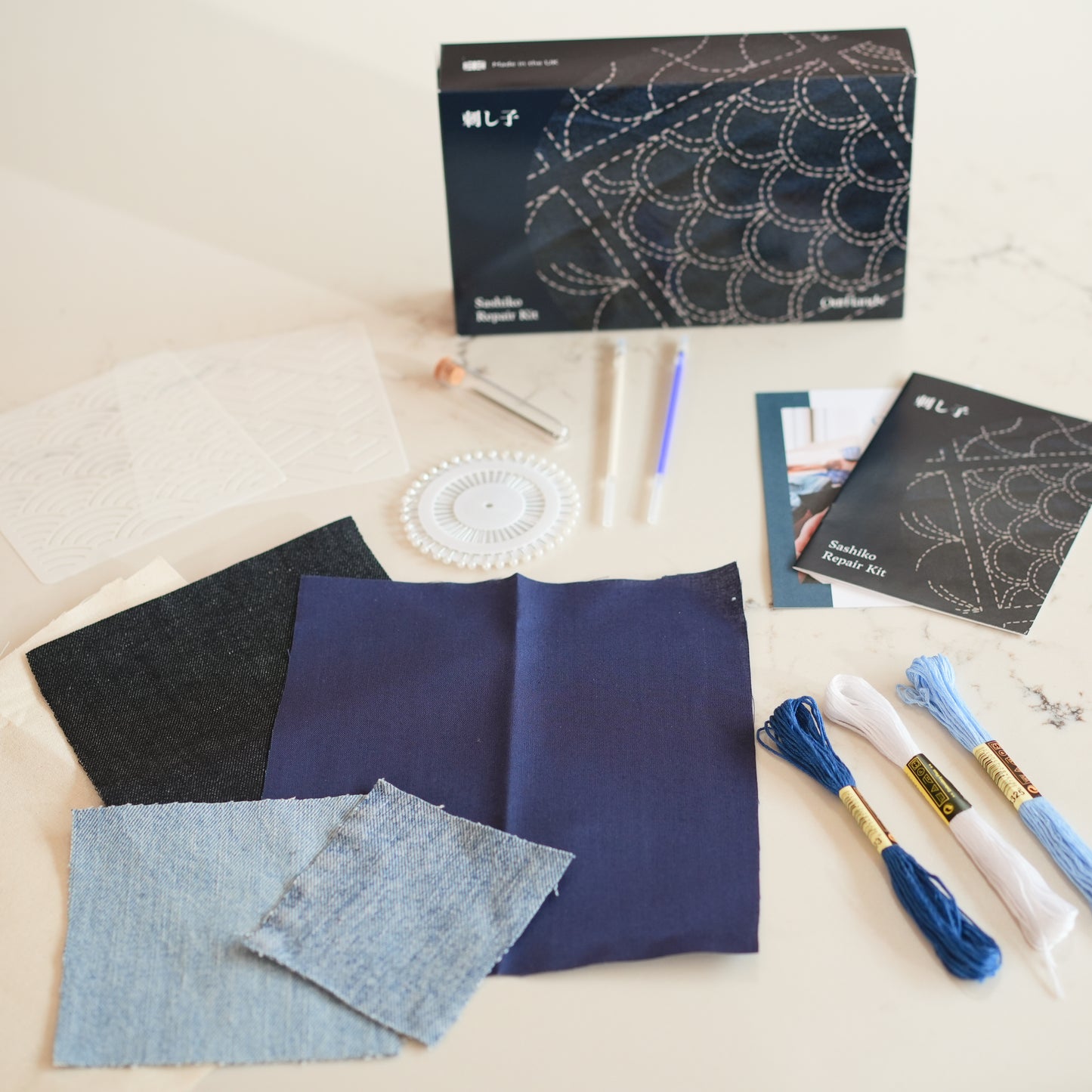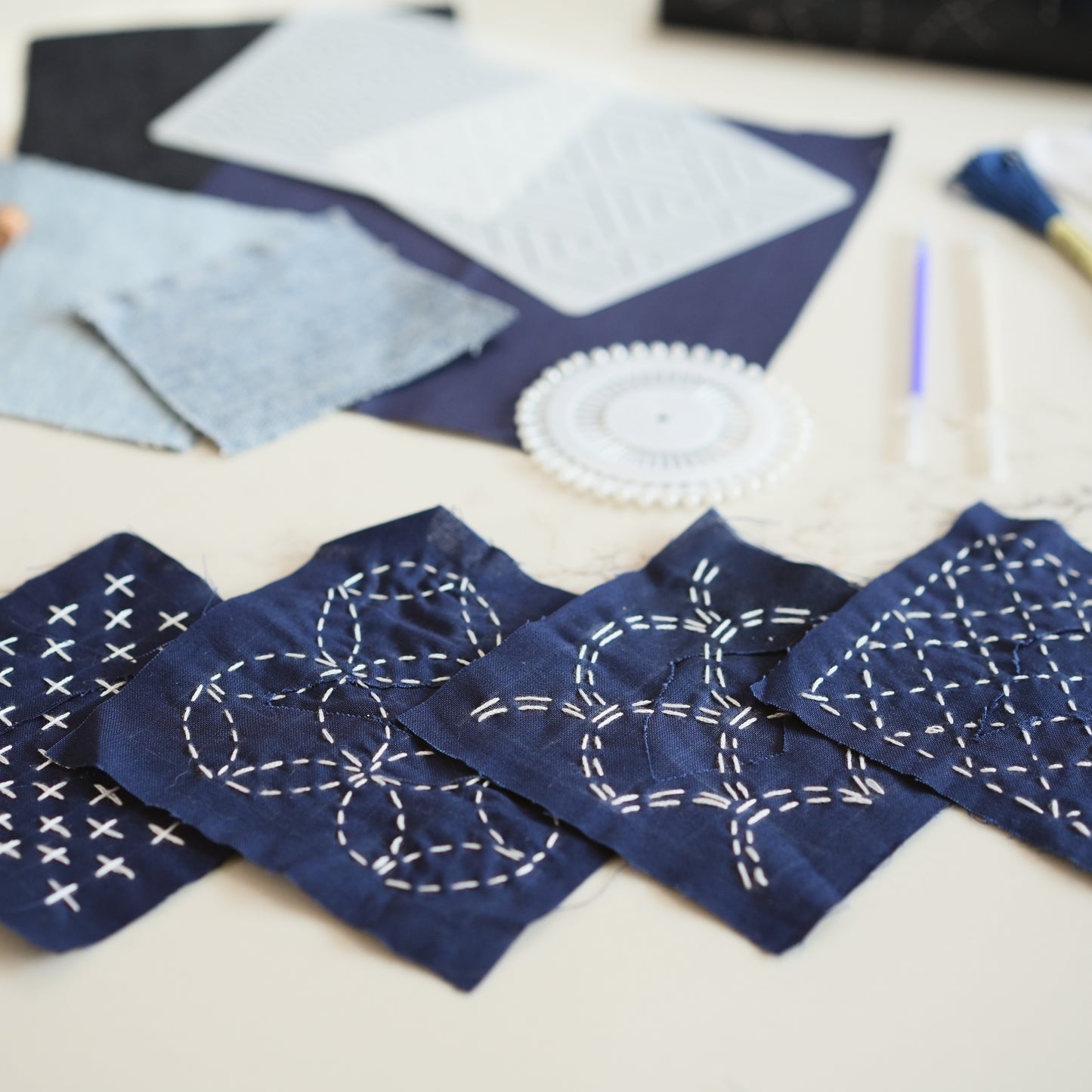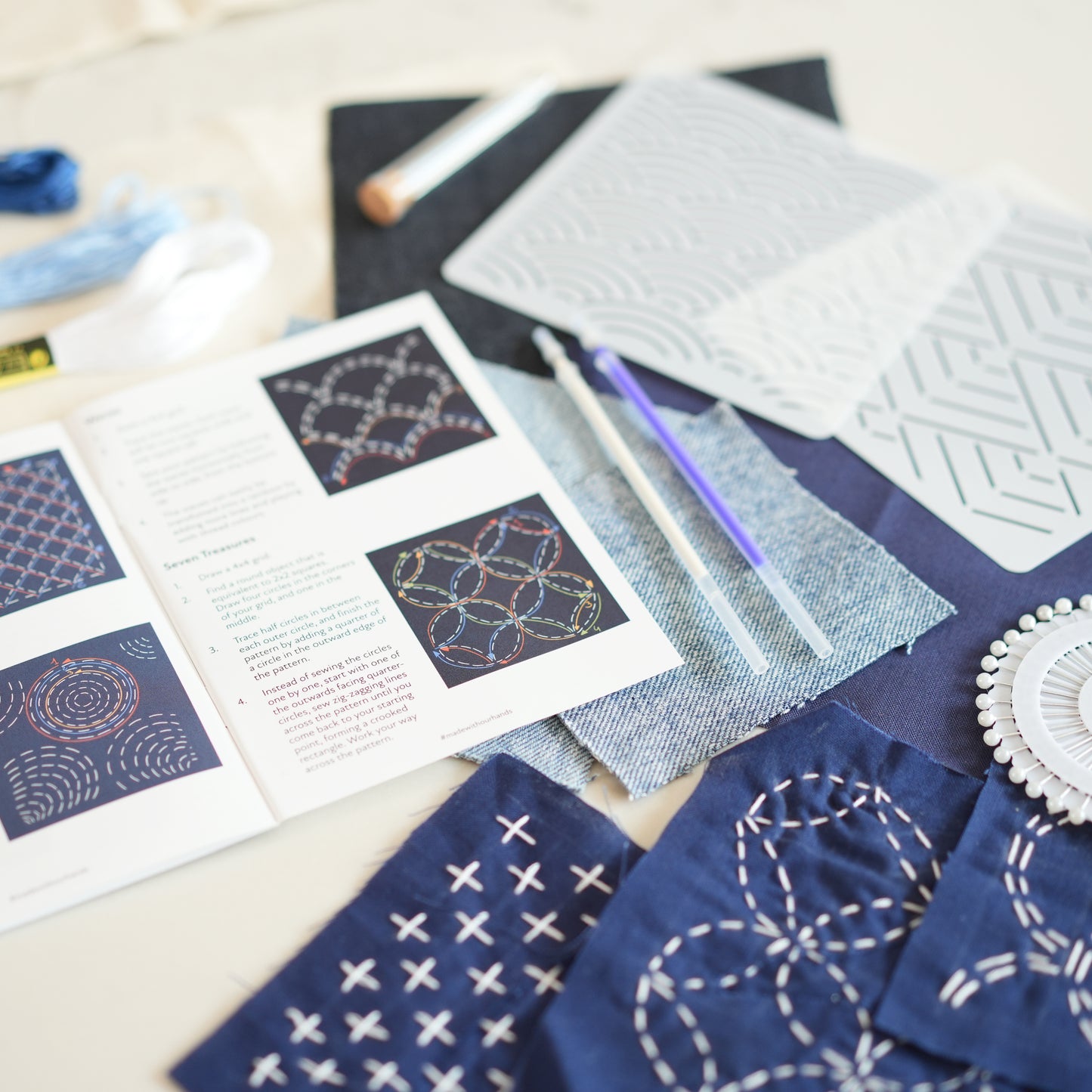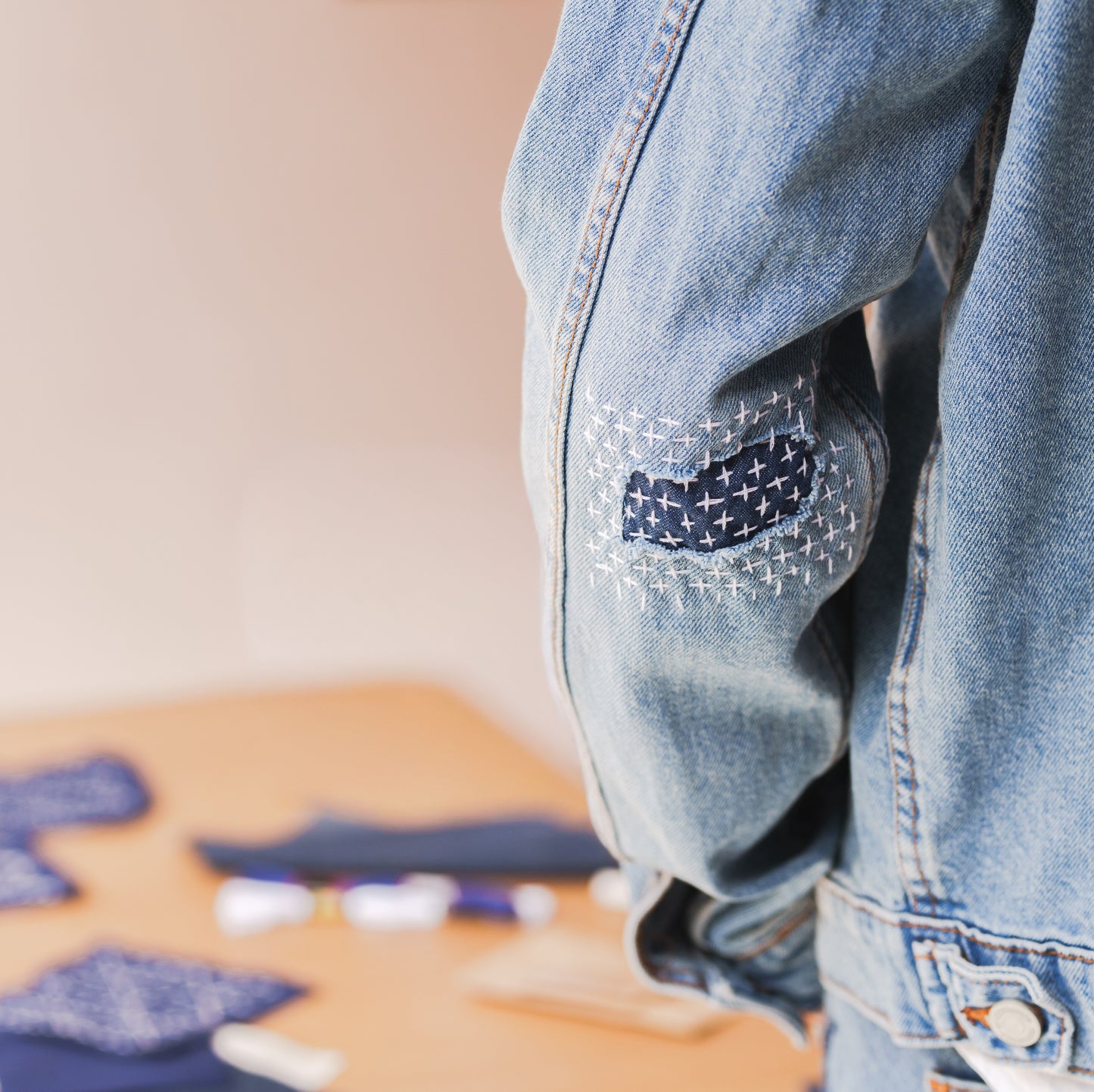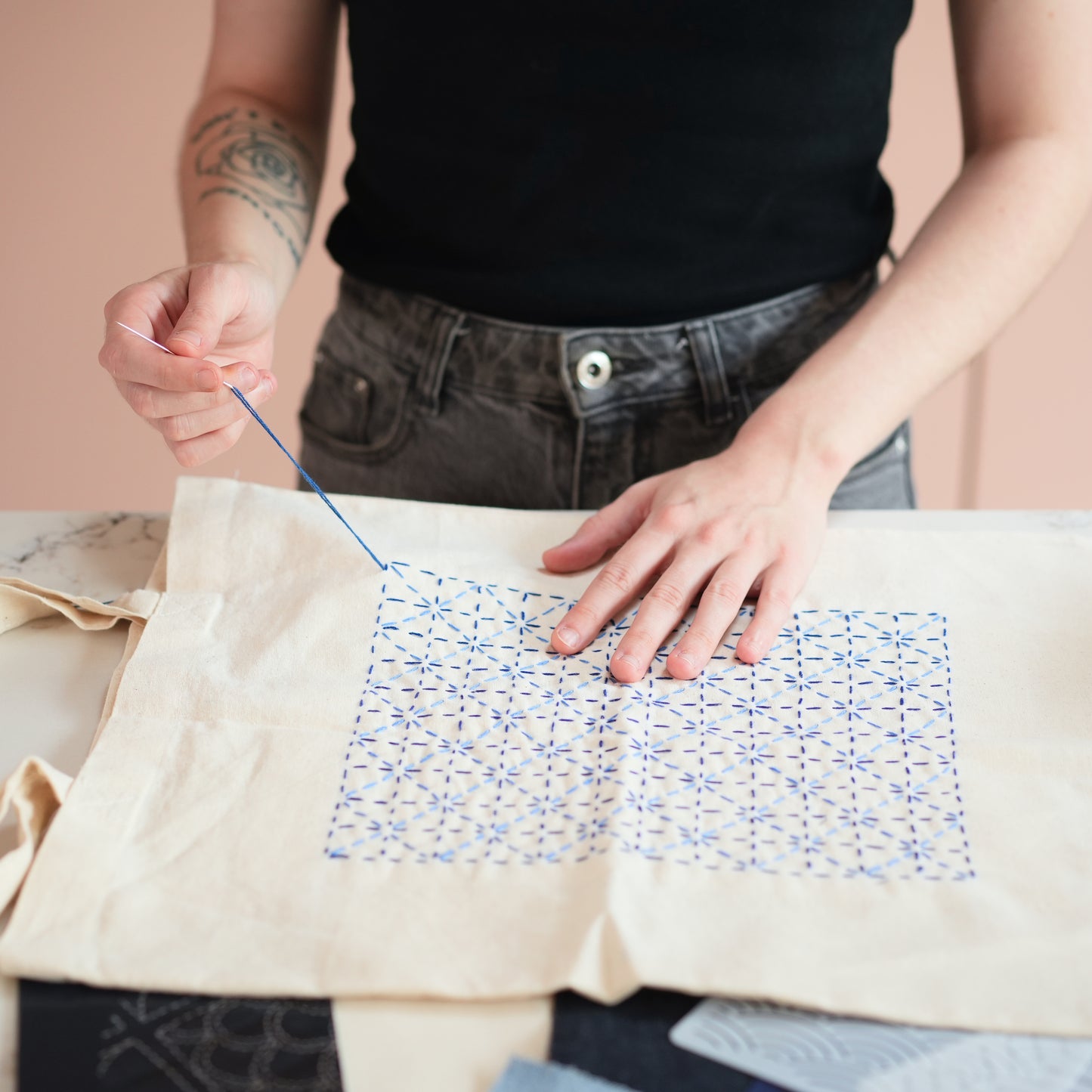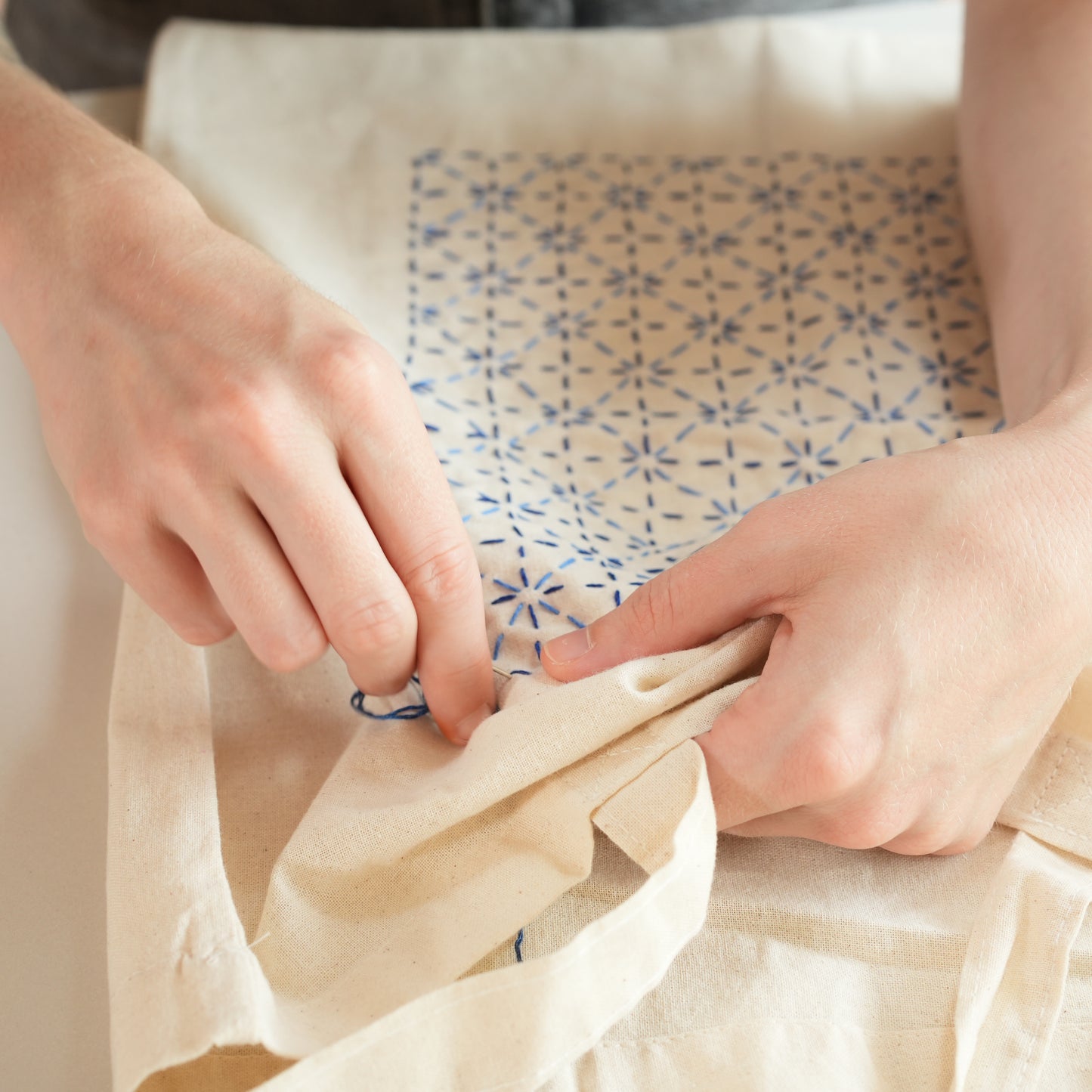What is sashiko? Learn the art of Japanese visible mending
You might have seen the term ‘sashiko’ popping up all over the internet. From Puma to Nike or Uniqlo, sashiko mending has been taking the fashion world by storm. You might have seen its delicate stitches and contrasting colours all over Pinterest and Instagram. The photos are often accompanied by the words ‘boro’, ‘moyōzashi’ or ‘hitomezashi’. In this journal post, we’ll dive into the world of Japanese embroidery and learn how to use it to mend clothes.
So, what is sashiko?
Sashiko is the Japanese art of repairing fabric with geometrical patterns to give it strength and beauty. It is similar to the kintsugi technique of repairing objects with gold.
These practical art forms fall under two Japanese philosophies. ‘Wabi-sabi’, which means trying to find beauty in imperfection and the passage of time, and ‘Mottainai’, the feeling of regret over something going to waste.

The meaning of sashiko
‘Sashiko’ encompasses all the sewing techniques that can be used to repair and embellish fabric.
‘Boro’ (meaning ‘rags’ or ‘tattered’) refers specifically to the repaired fabric itself.
Sashiko stitching is usually divided into two categories. ‘Hitomezashi’ creates patterns by following a grid, resulting in a strong geometrical motif.
'Moyōzashi’ constructs shapes from long lines of running stitches for a more fluid design.
A quick history of sashiko
The history of sashiko starts in Japan during the Edo period, in the 1600s. At the time, only the elites could use strong fabrics. The common people wore clothes made from thin cloth that would wear out while they worked.
With sashiko, they could mend those worn-out areas. They could also prevent tears by adding patches to the weak points of the fabric. Not only was this a way to strengthen and repair clothes, but it was also a way of adding meaning to their everyday lives. A jacket repaired with sashiko could be passed down from generation to generation, each new patch recounting the history of the family.
Through the centuries, sashiko was established as a fundamental part of Japanese farmers' work routine. They would use the technique during winter when it was too cold to work outside. The contrast of the white thread and indigo fabric made it easier to sew in the darkness of winter evenings.
By then, even firefighters had adopted the sashiko method. The overlapping patches of fabric held in place by the embroidery patterns meant that the uniforms were able to retain more water, which protected the firefighters against flames.
As time passed and western clothing trends swept Japan, the sashiko technique fell into oblivion. It is only recently that the traditional embroidery method has come back into fashion, out of historical interest and environmental concerns.

How to use sashiko
There are a thousand different ways to use sashiko. Sashiko is simply a form of Japanese hand embroidery, with geometrical patterns and running stitches. The rest is all up to you! You can use it to mend ripped jeans, or you can use it to customise a jacket.
That is not to say there is no specific technique involved! We’ll go more into detail about how to use sashiko in the rest of this article. But your creativity and self-expression are the most important part of the process.
Sashiko materials
There are a few things you will need to get started. If you’re not sure where to get what you need, our Sashiko Repair kit comes with everything you need, including detailed instructions and a blank reusable tote bag for you to practice on!
- Sashiko needles. Needles for sashiko are usually longer and sturdier so you can load stitches on them. Their large eye makes it easier to thread.
- Sashiko thread. The traditional thread for sashiko is made up of one single strand that is twisted around itself, but most types of threads will work. We like using regular embroidery thread to make it easier to play with the different thicknesses of the strands.
- Chalk. Sashiko patterns are very geometrical and can get quite complex! Using chalk to trace a grid will make it significantly easier to start your sashiko project.
- Fabric. Whether you want to use sashiko for visible mending or cute embroidery designs, you will need a base to sew on! For visible mending, you will want pieces of scrap fabric to patch up the hole.
- Sewing Pins. Sewing pins will make it easier to keep the fabric straight and stretched while you sew around it.
- Some creativity! There are some pictures on our sashiko Pinterest board to inspire you if you feel like you need some help.

Basic sashiko technique
There are quite a few traditional sashiko patterns to choose from when starting a sashiko project, such as squares, diamonds, crosses and waves. It is often helpful to trace the pattern onto your fabric to make it easier to follow.
Sashiko stitching is made of running stitches - loading several stitches onto the needle before pulling through the fabric. You will want to identify the longest continuing lines of your patterns. Otherwise, you'll have to start and stop the stitch every time you want to change directions. Be careful not to pull the stitches too tight or the fabric will pucker!
As with all DIY crafts, you have total control over your finished sashiko product. It is usual to have the stitches be the same size as the gaps, but nothing is stopping you from experimenting with different lengths! We recommend practising on scrap pieces of fabric to find your own signature looks.
As far as colours go, the traditional combo of indigo fabric and white stitches is a chic look that will go with anything. Though these colours are popular in Western countries, some Japanese artists find them old-fashioned and have started experimenting with more colours.

Sashiko projects for beginners
Starting a new hobby can be overwhelming! We’ve compiled a few sashiko projects that are perfect for beginners.
- Personalised tote bag. Tote bags have steadily been replacing plastic bags as our grocery shopping companions. Their thin cotton fabric makes them ideal as a first sashiko project, which is why we include one in our Sashiko Repair kit! They’re also cheap, reusable, and very easy to find in your favourite colour.
- DIY denim jackets. Denim jackets are a staple of any wardrobe, but it can be tricky to make them stand out. Their back area is perfect for repeating geometrical embroidery patterns or large designs. We also like a few discreet stitches around the collar to make it even more unique!
- Patchwork jeans. Whether you’re bored of the distressed denim look, or you ripped a hole through your favourite pair of jeans, a sashiko patch will make a great fashion statement.
- Sashiko coasters. No need to throw away your old tea towels and outgrown tee shirts! Some stuffing and stitches will turn them into a set of eye-catching coasters.
- Customised throw pillows. Give your couch a brand new look with embroidered pillow covers.
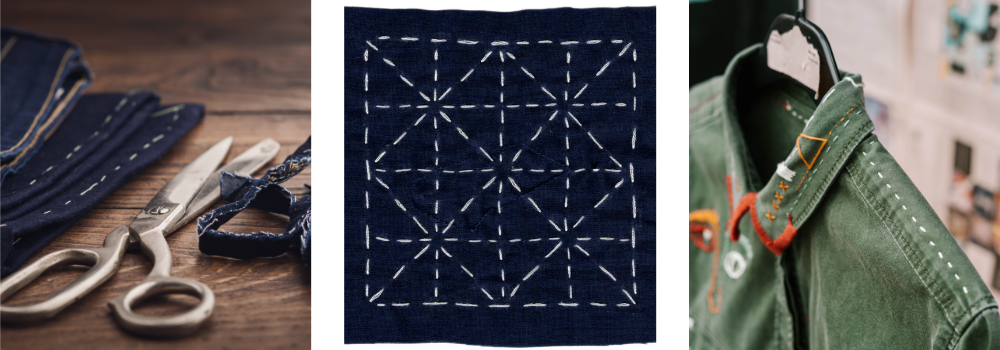
In conclusion
The sashiko philosophy is very close to our values. The mindfulness of the running stitch, the sustainability of repairing your clothes, and the artisanship of working with your hands with love and creativity.
Easy, useful, and beautiful, sashiko is a fantastic new hobby for DIY projects and new craft ideas. We hope this article has cleared up some questions for you and that you’re ready to embark on your sashiko journey.
Happy sewing!

